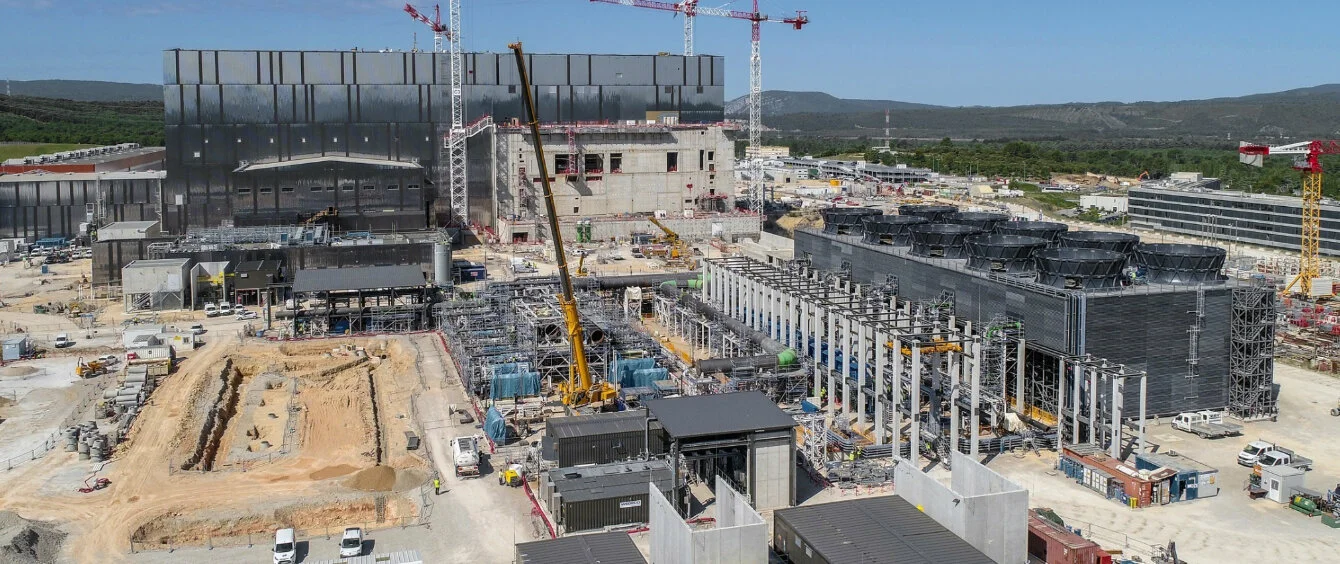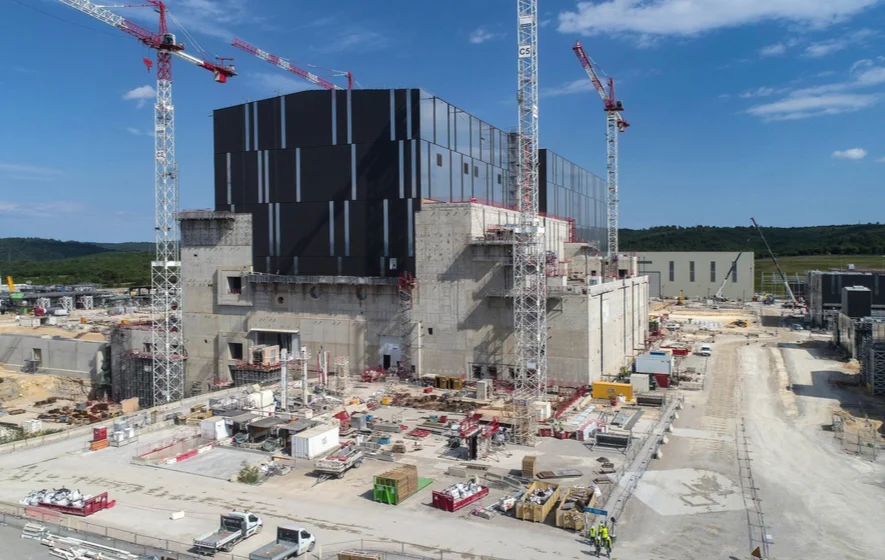This week, the eyes of the world were on Cadarache, Southern France, where the world’s largest fusion reactor, the International Thermonuclear Experimental Reactor, or ITER for short, began its assembly phase. The multi-billion-euro project, which has been backed by the EU, as well as the US, Russia, China, India, Japan and South Korea, among others, is aimed at pioneering the production of electricity from nuclear fusion. The associated costs are estimated to total more than 20 billion euros and construction began in 2010.
The aim of this ambitious project is to replicate the way in which the sun converts energy. In the sun’s core, hydrogen nuclei are combined to form helium nuclei, thereby releasing energy. It is precisely this process, known as nuclear fusion, that is to take place in the reactor at up to 150 million degrees Celsius. This heat could be used to generate water vapor that, in turn, is used to power turbines. So, in essence, the reactor would generate electricity from the fusion of hydrogen atoms – thereby imitating the way the sun works.
Construction to be completed by 2025
On 28th of July, representatives of the participating nations celebrated the start of a new construction phase around 60 kilometres northeast of the French port city of Marseille. The ceremony, which was attended via video link by French President Emmanuel Macron among others, was organised to celebrate the launch of the assembly phase of the Tokamak fusion reactor.
All the necessary reactor parts have been on site in France since July, following ten years of preparations and production, and are now ready to be assembled. “Constructing the machine piece-by-piece will be like assembling a three-dimensional puzzle on an intricate timeline”, explained ITER Director General Bernard Bigot. The pilot plant is scheduled to be completed by 2025, when it should become operational.
Test reactor for research into nuclear fusion
However, when all is said and done, the experimental plant in the South of France is still only a test reactor. The researchers are simply planning on using it to demonstrate that power generation via nuclear fusion is not only fundamentally possible from a technical standpoint but that it can also actually be controlled. ITER is scheduled to create its first plasma in December 2025 – the first step and prerequisite for igniting nuclear fusion.
According to estimates, however, it will take decades before the technology has matured enough to be used to meet energy needs. In fact, a fully-fledged power plant based on this technology is unlikely to be built before 2055.
The media coverage of what has been dubbed the “project of the century” shows varied opinions. Die Welt, for example, heralded the progress in terms of fusion technology as a positive sign, whereas taz opted to highlight criticism from Germany’s Green party in its article Montage von Fusionsreaktor beginnt (Assembly of fusion reactor begins). Under the headline Erste Montage-Etappe von Kernfusionsreaktor Iter beginnt (First assembly stage of nuclear fusion reactor iter begins), Süddeutsche Zeitung, on the other hand, echoed both the support and criticism of various parties weighing in on the international research project: While proponents hope that nuclear fusion will provide a virtually inexhaustible source of zero-emissions energy, opponents cite the construction for being too late and costly, branding the project as an “expensive toy”.
Photo credit: ITER

